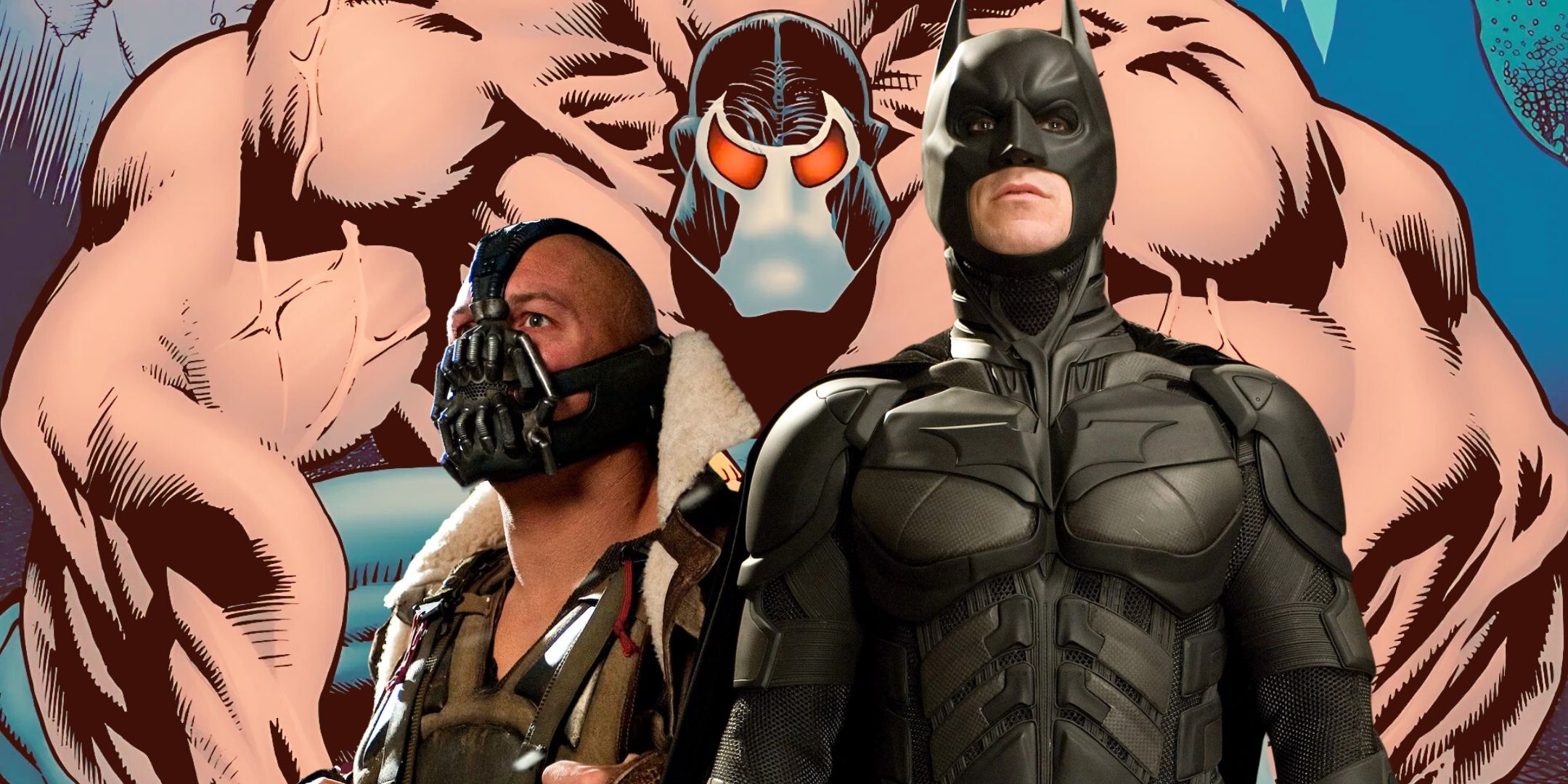[[{“value”:”
When it comes to ’90s comics, few writers set the tone for DC Comics quite like Chuck Dixon, whose work with Graham Nolan helped redefine the Batman mythos for the Modern Age. Not only did the writer explore characters like the Birds of Prey and Nightwing, but he also firmly established himself as a brilliant author for the Caped Crusader. Between series, Dixon spent close to two decades penning a variety of Gotham-based stories, but one is indisputably his best.
Since starting with DC in 1988, Chuck Dixon earned a reputation as one of the best action-focused writers in the business. Known for classics like Batman/Wildcat, Bane: Conquest, Superman/Aliens II and Green Arrow, he explored a multitude of characters, through both continuity and Elseworlds. Boasting one of the strongest careers of the Modern Age generation of writers, everyone has their own opinion about which of his stories were the best. When looking for a story that focuses on the legacy, impact and exploration of Batman, the answer is clear for most fans.
Related
Every Classic DC Villain Featured in Absolute Batman
The Absolute Batman series features a few drastic reinventions to the Dark Knight’s classic villains like Penguin, Riddler, Black Mask and Bane.
Dixon And Nolan Unleashed A Juggernaut Villain
While modern audiences might think of Bane as a staple of Batman’s universe, it wasn’t until 1993 that the villain finally debuted. In the pages of Chuck Dixon and Graham Nolan’s Vengeance of Bane, readers are shown the character’s backstory.
Bane was born in a brutal prison to a freedom fighter mother who perished in childbirth.
On the island of Santa Prisca, where he lived his entire life into adulthood, he was experimented on by scientists, who used the venom serum to enhance his strength. It’s key to note that, while the serum does enhance the villain’s strength, he’s every bit a formidable, intelligent and powerful adversary without it.
Along with his fellow prisoners, Bird, Trogg and Zombie, Bane stages a breakout after learning of Batman, swiftly tearing through the prison’s guards and killing the scientists who experimented on him. With his envious heart set on the conquest of Gotham and the breaking of the Bat, he set off for the United States.
Upon arriving in the city, the villain wreaks havoc, making him a target of both the GCPD and the Caped Crusader. Despite escaping, he realizes his adversary is tougher than he expected, and realizes a direct, one-to-one fight sets him at a disadvantage. Thus begins the road to one of DC’s biggest events of the 1990s, and Dixon’s finest Batman story: “Knightfall.”
Related
25 Most Iconic Batman Quotes Ever, Ranked
DC fans everywhere know that when Batman speaks, everyone listens. Batman quotes are some of the most famous comic lines in history.
Knightfall Saw The Breaking Of The Bat
Gotham Was Left In Need Of A New Protector
“Knightfall” begins in the aftermath of a breakout at Arkham Asylum, allowing all the worst Gotham super villains to run amok across the city. For the GCPD, it’s all hands on deck, and Batman is soon to follow.
The original Knightfall story was told across Batman #491-500, Detective Comics #659-666, Batman: Shadow of the Bat #17-18, and Showcase #7-8.
Beginning with the Mad Hatter putting on his own tea party, replete with guests under his mind control, the heroes start rounding them up. What follows is a days-long manhunt for everyone from Joker and Scarecrow terrorizing the city’s mayor to Victor Zsasz holding hostage his latest victims. With each passing foe, Bruce becomes increasingly exhausted, injured and sleep-deprived, all while Jean-Paul Valley’s mind slowly gives way to The System.
As Batman returns home to the manor, barely able to stand, he’s met with the mastermind of the whole operation: Bane. Having deduced the hero’s secret identity long before, he sees the physical and spiritual “breaking of the Bat” as the last step in his road to conquering Gotham. Although the hero puts up a commendable fight considering his condition, Bane is ultimately triumphant, famously breaking his adversary’s back over his knee. Rather than kill him, the foe instead leaves him alive, allowing him to witness the fall of his city. With the city still reeling from the chaos, Wayne is forced to consider someone else stepping into his shoes.
Now disabled and embittered by his condition, Bruce turns to Jean-Paul to take up the mantle of Batman. Bringing Todd along as his own Robin, Valley takes on crime in the city along the way to finding Bane. Having redesigned the costume into something considerably more ’90s-inspired and imposing, he faces the villain in open combat, defeating and humiliating him in front of Gothamites. However, with his ultra-violent tactics now on full display, the city begins to question him as their protector, still unaware that the mantle has been passed. Realizing he’ll need to take his moniker back, Bruce embarks on a journey to heal his injuries, one that would later be told across “Knightquest” and “Knightsend.”
Related
Absolute Batman’s Take on Bane Calls Back to an Underrated DC Cartoon
The Absolute universe’s divisive take on Bane actually has subtle hints connecting him to 2004’s incredibly underrated The Batman animated series.
Why Knightfall Is As Crucial For Bane As Batman
It Established Bane As The Definitive Batman Foe Of The Decade
Considering the lengths modern authors go to in order to make their villains sympathetic, Dixon’s story is a masterclass in helping readers sympathize with an antagonist who is still, without a doubt, a villain. In effect, Bane is the complete inverse of Bruce Wayne, defined by his lack of privilege, dissociation from his parents and complete self-sufficiency.
Both are men of keen intellect, and the villain soon exhibits his almost unparalleled aptitude for strategy as he plots Batman’s downfall.
Considering the difficulties modern writers have in establishing true, timeless villains for DC’s foremost heroes, Dixon and Nolan’s success with Bane can’t be overstated. From the jump, readers didn’t just have an intriguing new character, but one who fit in seamlessly, bringing someone who could challenge the hero on both a physical and intellectual level.That impact wouldn’t have been the same without exploring his tragic, brutal backstory.
“Knightfall” served two purposes in the ’90s. On one hand, it followed DC’s strategy of temporarily replacing core heroes with a new generation. On the other hand, it gave fans a genuinely impressive new villain who, when all was said and done, represented a newer, darker decade of comics. A far cry from the bright and colorful campy foes of the Silver Age, he shattered audience expectations of the stakes in a Batman story and remains one of the most impressive debuts of the Modern Age. Perhaps Dixon’s best achievement throughout the saga is his ability to define Bane from the outset, proving that a great villain can be sympathetic without losing their appeal. In giving the hero a true mirror image, readers believed the foe could defeat the Caped Crusader.
By itself, Vengeance of Bane has every right to claim the mantle of the best self-contained graphic novel of the decade, thanks to the art and depth given to the character. “Knightfall” itself is an exploration of Batman’s unrivaled devotion to his city, seeing the character push himself to his limit to protect the people of Gotham. In effect, readers are also given a tour of his best bad guys, giving them the chance to see what makes each one tick and why they’re so dangerous. When the hero is finally defeated, it comes after he proves just how much he’s willing to sacrifice, with each sub-plot serving as the perfect window into their characters for new readers.
Related
Batman’s 30 Most Powerful Suits, Ranked
When Batman needs to face a powerful villain or the corrupted Justice League, he’s not afraid to give himself an edge with a few hard-hitting suits.
Knightfall Represents The Best And Worst Of The ’90s
The Decade Was Always Changing
The 1990s were a period that, for DC and Marvel, was in a state of constant reinvention. Whether it was heroes adopting more “modern,” and edgy costumes or the passing of key mantles to a new generation, things were always in flux.
To many readers, the events used to sell these storylines came across as mere gimmicks, while some praised the willingness of the Big Two to try something new.
After all, the era did produce a variety of iconic stories still loved today, such as “Death of Superman.” “Knightfall” sat right alongside the fall of the Man of Tomorrow, with each story highlighting everything great about their respective hero by showing what’s lost when they’re gone.
As one of the best DC events of the ’90s, “Knightfall” stands as a testament to the sheer resolve and willpower of Bruce Wayne, something that still defines the character today. Whether for new readers who want to explore the hero’s rogues gallery or old-school ones being shown a tale of their favorite hero’s devotion to Gotham, the story is a timeless classic.
A summation of everything great about Chuck Dixon’s tenure on Detective Comics, “Knightfall” was a story that handed readers one of the best villains of the Modern Age of Comics in Bane, and fans still love it today.
“}]] After joining DC Comics in 1988, Chuck Dixon penned a variety of iconic Batman tales, but one stands out ahead of the rest for its impact. Read More

